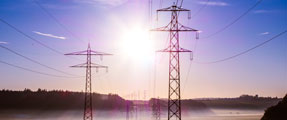At the July 23, 2024 Public Meeting, the Oregon Public Utility Commission (the Commission) adopting Staff’s recommendation to acknowledge Idaho Power’s 2023 Integrated Resource Plan (IRP) in Docket No. LC 84. The Commission recommended acknowledgment, subject to several action plan items and recommendations. This docket involved several rounds of discovery, comments, and Commission Public Meetings. The Commissioned issued Order No. 24-285 acknowledging the IRP on August 26, 2024.
The IRP is a road map for providing reliable and least-cost, least-risk electric service to the utility’s customers, consistent with state and federal energy policies, while addressing and planning for uncertainties. The primary outcome of the process is the selection of a portfolio of resources with the best combination of expected costs and associated risks and uncertainties for the utility and its customers. After selecting a best cost/risk portfolio, the utility develops a proposed “Action Plan” of resource activities to undertake over the next two to four years to implement the plan.
In Idaho Power’s 2023 IRP, Idaho Power assumed a zero percent wind qualifying facility (QF) renewal rate in base planning. Assuming that no wind QFs will renew would likely result in Idaho Power overestimating its resource needs and over procuring resources. Both Staff and stakeholders, including the Renewable Energy Coalition (REC), found this approach unreasonable and recommended Idaho Power develop a reasonable non-zero estimate of a wind QF renewal rate in the next IRP, and until such rate is established, it should adopt a wind QF renewal rate of 75 percent.
Idaho Power’s assumption of a zero wind QF renewal rate was found to be inconsistent with the direction of Order No. 21-184 in Idaho Power’s previous IRP, which said modeling of renewals should include some percentage, rather than taking an unrealistic “all or nothing” approach. Idaho Power rejected the notion that a zero percent wind QF renewal was unreasonable, noting that informal conversations with several wind QFs indicated lack of intention to renew, that renewal assumptions were based on the best information available at the time, and its zero percent assumption is conservative and aligns with Idaho Public Utilities Commission direction. Staff and stakeholders suggested various options for a non-zero wind QF renewal rates that Idaho Power should use and the timing of the application of those rates. Idaho Power objected to what they described as prescriptive approaches to modeling that do not consider the nuances of a given utility’s customers or service area.
The Commission adopted Staff’s recommendation that, prior to portfolio optimization for the next IRP, Idaho Power must work with Staff and stakeholders to determine and employ a non-zero renewal rate for all QFs in line with PacifiCorp’s estimation methodology, or other similar methodologies, to be adopted in the 2025 IRP. The Commission further stated Idaho Power should assume a 75 percent wind QF renewal rate pending a non-zero renewal rate determination via a methodology accepted by the Commission in the next IRP.
Sanger Law, PC represented REC in this proceeding.
REC advocates for reasonable Public Utility Regulatory Policies Act and interconnection policies on behalf of renewable qualifying facilities that are located in Idaho, Montana, Oregon, Utah, Washington, and Wyoming.
Disclaimer
These materials are intended to as informational and are not to be considered legal advice or legal opinion, nor do they create a lawyer-client relationship. Information included about previous case results does not assure a similar future result.


